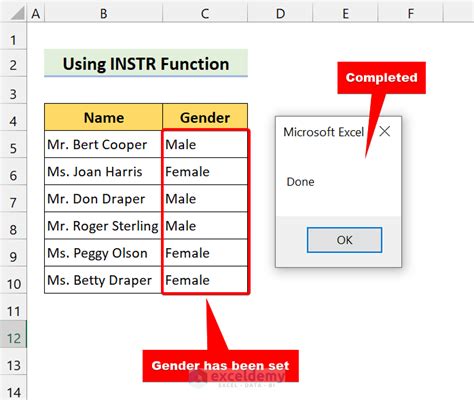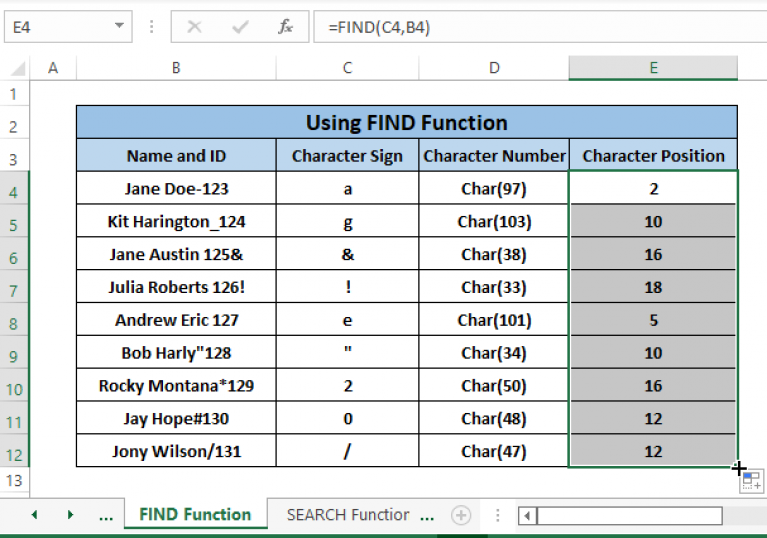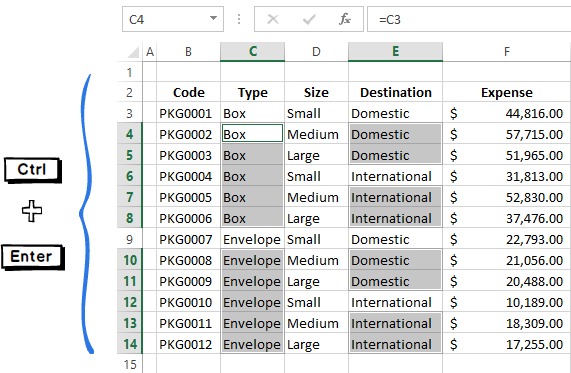How to Find Strings in Excel VBA

Excel VBA (Visual Basic for Applications) is a powerful tool for automating tasks and manipulating data within Microsoft Excel. One of the essential skills in VBA programming is the ability to search and find specific strings within Excel worksheets. This article will guide you through the process of finding strings in Excel VBA, providing you with a comprehensive understanding of the techniques and best practices involved.
Understanding String Searching in VBA

When it comes to finding strings in Excel VBA, you have a few different approaches at your disposal. The choice of method depends on the complexity of your search criteria and the nature of the data you’re working with. Let’s explore these methods in detail.
Using the Find Method
The Find method is a versatile tool for searching within Excel VBA. It allows you to locate a specific string within a range of cells. Here’s an example of how to use it:
Sub FindStringExample()
Dim findRange As Range
Dim foundCell As Range
' Set the range you want to search
Set findRange = Sheet1.Range("A1:C10")
' Search for the string "Excel"
Set foundCell = findRange.Find("Excel")
If Not foundCell Is Nothing Then
' Do something with the found cell
MsgBox "Found 'Excel' in cell: " & foundCell.Address
Else
MsgBox "String not found."
End If
End Sub
In this example, we set the range to search (Sheet1.Range("A1:C10")) and then use the Find method to locate the string "Excel." If the string is found, the code displays a message box with the cell address. If not, it informs you that the string was not found.
The FindNext Method for Multiple Occurrences
If you need to find multiple occurrences of a string, you can use the FindNext method in conjunction with a loop. Here’s an example:
Sub FindNextExample()
Dim findRange As Range
Dim foundCell As Range
Dim count As Integer
' Set the range you want to search
Set findRange = Sheet1.Range("A1:C10")
' Search for the string "Excel"
Set foundCell = findRange.Find("Excel")
If Not foundCell Is Nothing Then
count = 1
Do While Not foundCell Is Nothing
MsgBox "Found 'Excel' in cell: " & foundCell.Address
Set foundCell = findRange.FindNext(foundCell)
count = count + 1
Loop
MsgBox "Total occurrences: " & count
Else
MsgBox "String not found."
End If
End Sub
This code will continue searching for the string "Excel" in the specified range until no more occurrences are found. It then displays the total count of occurrences.
Using the InStr Function
The InStr function is another powerful tool for finding strings. It returns the position of the first occurrence of one string within another. Here’s how you can use it:
Sub InStrExample()
Dim searchString As String
Dim mainString As String
Dim position As Integer
' Define the strings
searchString = "Excel"
mainString = "We love using Excel for data analysis."
' Find the position of "Excel" in the main string
position = InStr(mainString, searchString)
If position > 0 Then
MsgBox "Found 'Excel' at position: " & position
Else
MsgBox "String not found."
End If
End Sub
In this example, we define two strings and then use the InStr function to find the position of "Excel" within the mainString. If found, the code displays the position; otherwise, it indicates that the string was not found.
Tips and Best Practices

When working with string searching in Excel VBA, consider the following tips to enhance your efficiency and accuracy:
- Range Specification: Clearly define the range you want to search within. This prevents unnecessary processing of irrelevant data.
- Handling Multiple Occurrences: If you need to find and process multiple occurrences of a string, utilize loops and the FindNext method effectively.
- Case Sensitivity: By default, VBA searches are case-insensitive. If you require case-sensitive searches, you can adjust the MatchCase argument in the Find method.
- Wildcards: VBA supports the use of wildcards in searches. You can use "*" for any string of characters and "?" for any single character. This is useful for more flexible searches.
- Error Handling: Always include proper error handling to manage cases where the string might not be found. This ensures your code doesn't crash unexpectedly.
Real-World Application
Let’s consider a practical scenario where you have a large dataset of customer orders, and you want to find all occurrences of a specific product name to analyze its sales performance. Here’s how you can achieve this:
Sub FindProductExample()
Dim productRange As Range
Dim foundCell As Range
Dim productName As String
Dim totalOccurrences As Integer
' Set the range of product names
Set productRange = Sheet1.Range("A1:A1000")
' Get the product name you want to search for
productName = InputBox("Enter the product name:")
' Search for the product name
Set foundCell = productRange.Find(productName, , xlValues, xlWhole)
If Not foundCell Is Nothing Then
totalOccurrences = 0
Do While Not foundCell Is Nothing
totalOccurrences = totalOccurrences + 1
Set foundCell = productRange.FindNext(foundCell)
Loop
MsgBox "Total occurrences of '" & productName & "': " & totalOccurrences
Else
MsgBox "Product not found."
End If
End Sub
In this code, we prompt the user to enter the product name they're interested in. We then search for that name in the specified range of product names. If found, we count the total occurrences and display the result; otherwise, we inform the user that the product was not found.
Conclusion
Finding strings in Excel VBA is a fundamental skill for any VBA programmer. By understanding the different methods and best practices, you can efficiently search and manipulate data within Excel worksheets. Whether you’re searching for a specific string or analyzing complex datasets, the techniques outlined in this article will empower you to tackle a wide range of tasks.
Frequently Asked Questions
How can I perform a case-sensitive search in VBA?
+
To make the search case-sensitive, you can set the MatchCase argument to True when using the Find method. For example: Set foundCell = findRange.Find(“Excel”, , , , True).
Can I use wildcards in my search queries?
+
Yes, VBA supports wildcards. You can use ”*” to match any string of characters and ”?” to match any single character. For instance, to find all cells containing a word ending with “ing”, you can use: Set foundCell = findRange.Find(“?ing”, , , , True).
What if I need to search for multiple strings simultaneously?
+
You can use a loop to iterate through a list of strings and perform the search for each one. For example: For Each str In Array(“String1”, “String2”, “String3”) Set foundCell = findRange.Find(str) … Next.
How can I extract data from the found cells for further processing?
+
You can access the data in the found cells using the Value property. For instance, foundCell.Value will give you the value of the found cell.



